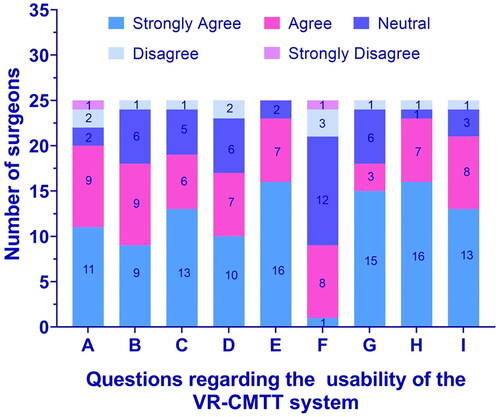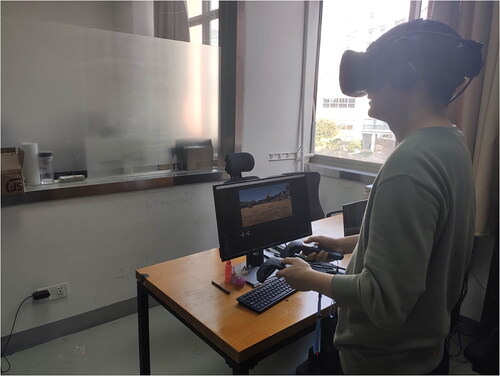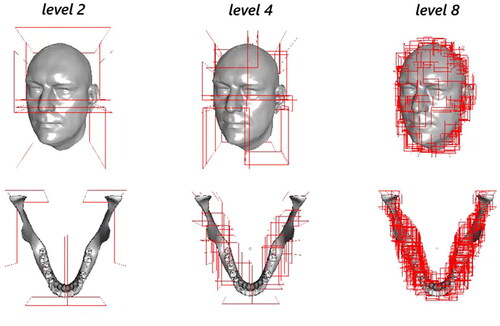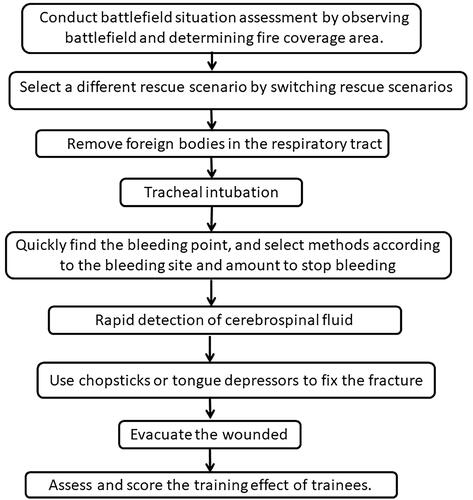Figures & data
Table 1. PBD algorithm.
Table 2. Fluid simulation algorithm based on PBD.
Figure 4. Blood simulation effect based on obi fluid plug-in: (A) particle rendering; (B) fluid rendering; (C) blood effect in scene.
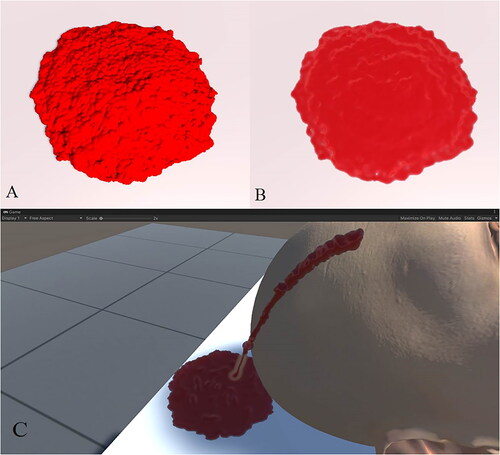
Figure 5. Assessment process of CMF trauma treatment: (A) find the wounded; (B) move the casualty to a safe environment; (C) remove foreign bodies in the respiratory tract; (D) insert ventilation; (E) hemostasis; (F) extract cerebrospinal fluid; (G) judged there is cerebrospinal fluid leakage or not; (H) reduction of fracture; (I) evacuation.
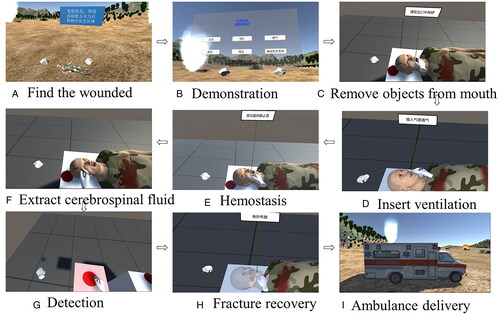
Figure 7. Responses to the questions regarding the content of the VR-CMTT system: (A) the CMF trauma treatment process is shown accurately in this application; (B) all the steps of the CMF trauma treatment are covered in this application; (C) the order of steps in CMF trauma treatment are not shown correctly; (D) I could clearly see the benefit of videos in training; (E) I could see how 3D videos are better than conventional 2D videos; (F) I found the virtual environment of battlefield scene useful; (G) interacting with the pre-surgical data was beneficial; (H) the menu scene showing all steps is useful for trainees to remember the sequence.
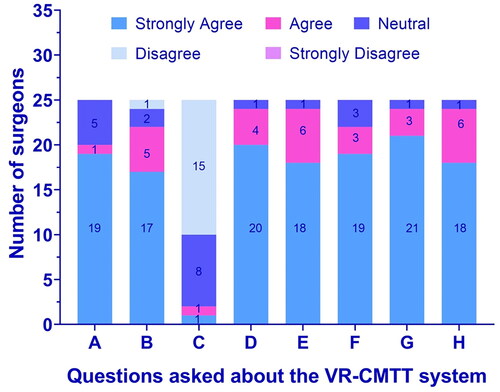
Figure 8. Responses to the questions regarding the quality of the anatomy in the application: (A) the anatomy of the skull shown in the VR-CMTT system application is accurate; (B) the blood vessels shown in the VR-CMTT system are accurate; (C) the 3D models resemble the real life anatomy realistically in their appearance; (D) it is necessary to have this aspect of anatomy interaction in the application.
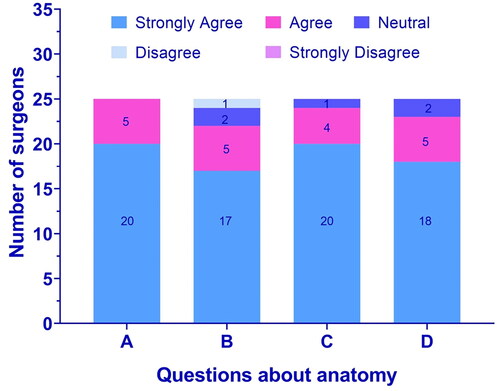
Figure 9. Responses to the questions regarding the applicability of the VR-CMTT system to the curriculum: (A) I found this application interesting; (B) I think this application will be useful for teaching trainees regarding the rescue of CMF injuries; (C) addition of virtual reality application like the VR-CMTT system to the training will be beneficial for surgical trainees; (D) I think this application will enhance the understanding of surgical trainees regarding the rescue of CMF injuries; (E) I think this application will increase the confidence of surgical trainees before they perform a real surgery on the battlefield; (F) I see this application more like an adjunct than a necessary tool for studies; (G) I want to see more first aid surgical procedures developed into the VR-CMTT system.
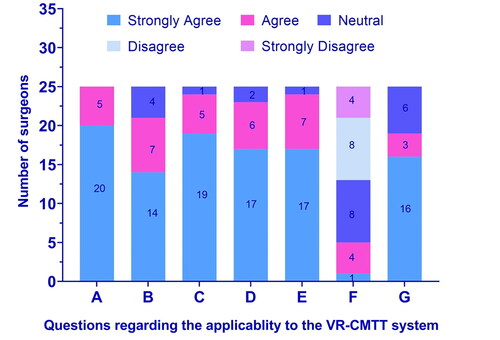
Figure 10. Responses to the questions regarding the usability of the VR-CMTT system: (A) I found the headset comfortable to wear throughout the application; (B) I found the quality of audio to be excellent; (C) I found the quality of the videos to be excellent; (D) I could interact with the user interface as I expected; (E) I could touch the virtual objects appropriately; (F) I could not track my hands in the application accurately; (G) I could look around the battlefield comfortably without any discomfort; (H) I did not experience nausea, dizziness or headache using the VR-CMTT system; (I) It was comfortable to use the VR-CMTT system.
